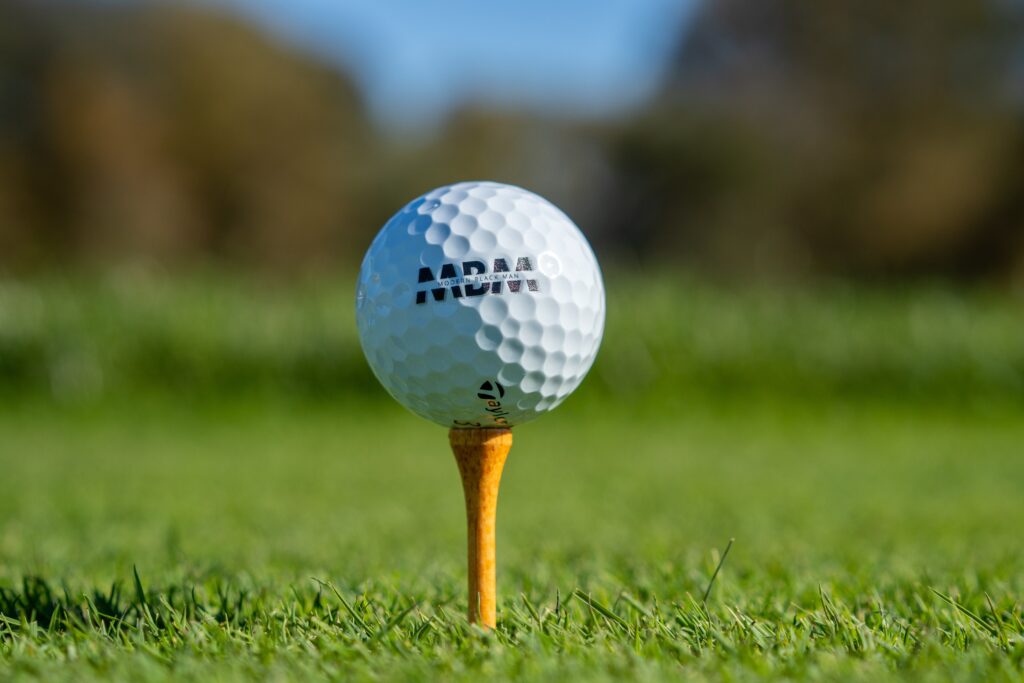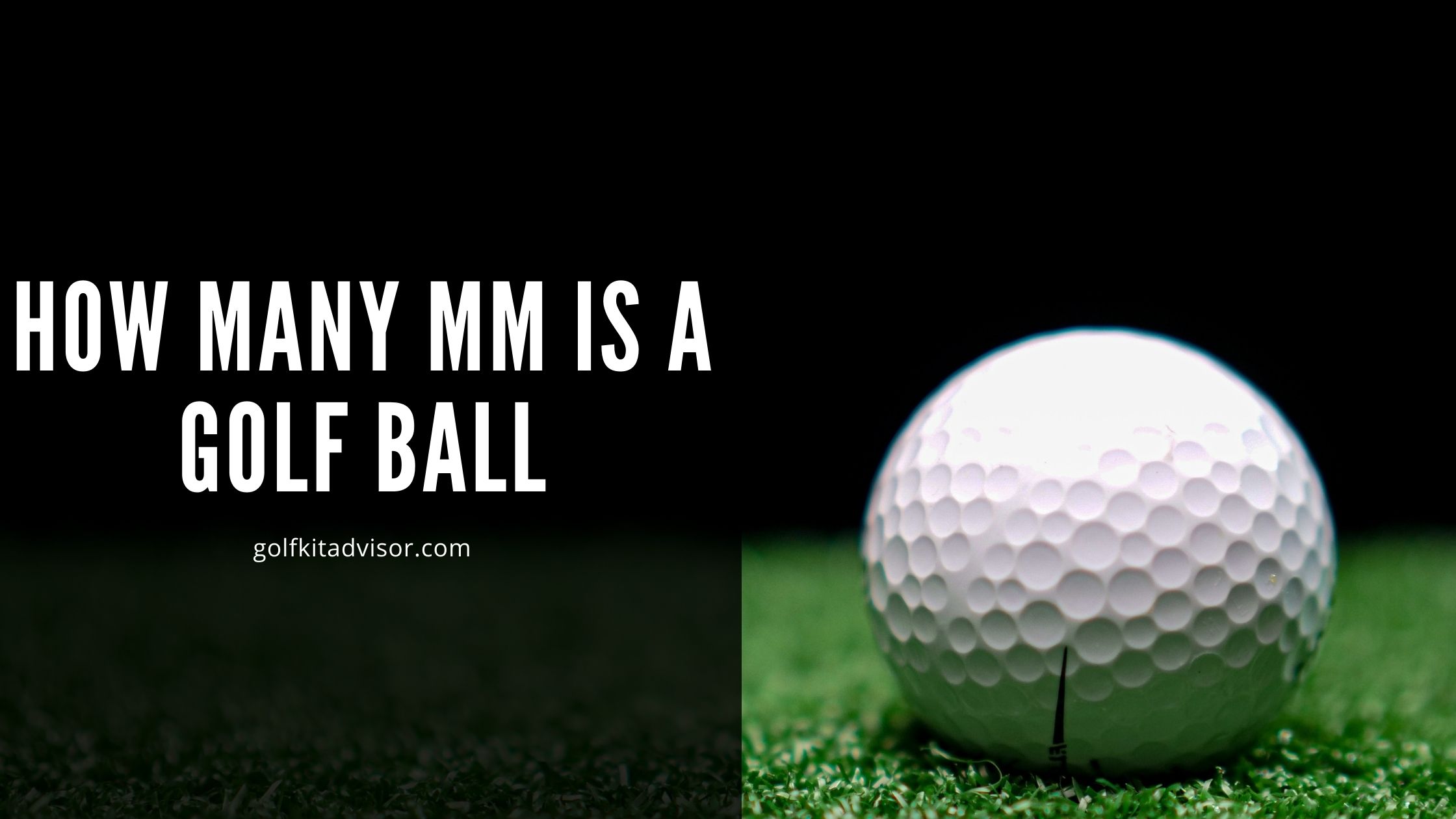The golf ball size is measured in millimeters. It’s a metric system, so the measurement has no units of measure attached to it. The most common golf balls are between 45 and 50 mm in diameter (1.8 inches). Some golf balls are smaller, called “mini” golf balls, which measure 42 mm in diameter (1.65 inches).
Table of Contents
What is the diameter of a normal golf ball?
The diameter of a golf ball is 1.68 inches, or 4.27 centimeters (cm). Golf balls must be between 1.62 and 2.00 cm in diameter, so the most common size is about 1.68 cm across, with a weight of 45-46 grams for men’s golf balls and 38-39 grams for women’s golf balls.
Golf Ball Size History (British Ball & American Ball)

The history of golf balls is a long and winding one. From the earliest days, when golf was played with wooden clubs and balls made from leather stuffed with feathers or hair, to today’s high-tech equipment that includes metal drivers and titanium clubheads, there have been many changes in ball design over the centuries.
One of the earliest recorded references to golf is in a 1457 Act of Parliament in Scotland, which banned the game’s playing because it interfered with archery practice. The first known mention of golf balls was around 1502 when King James IV of Scotland gifted a set of leather balls to Pope Alexander VI.
In 1764, the first-ever patent for a golf ball was issued to Scottish doctor William Taylor. His design was made from boiled feathers and covered in gutta-percha (a natural rubber). This ball was much easier to hit than its predecessors and quickly became popular with players.
In 1848, the Reverend Adam Paterson invented the first rubber-cored golf ball. His design, known as the gutta-percha ball, dipped a small sphere of gutta-percha (a natural latex) in molten sulfur to give it a hard outer shell.
This new type of ball was much more resilient than the feathery balls used previously and could be hit further with less effort. The gutta-percha ball quickly became the standard for golfers worldwide until well into the 20th century.
In 1898, Coburn Haskell of Cleveland, Ohio, patented the first wound golf ball. His design featured a solid rubber core wrapped in gutta-percha and then covered with a layer of woven balata (natural latex).
The balata provided a softer feel than gutta-percha, and the ball could be hit further with less effort. The Haskell ball became very popular with professional golfers and was used by many top players for almost 50 years.
In 1932, the United States Golf Association (USGA) standardized the size of golf balls at 1.68 inches in diameter. This regulation remained in place until 1990, when it was increased to 1.69 inches.
In the early days of golf, there were two different types of balls: British and American. The British ball was larger than the American ball and was also made of a harder material.
This made it difficult to control and they didn’t travel as far when hit. On the other hand, the American ball was smaller and softer, making it easier to control but not as long-hitting as its British counterpart. In 1900, both sides agreed to standardize the size of golf balls to 1.68 inches in diameter (the same size as a tennis ball). This site is still used today.
While the size of golf balls has remained constant over the years, their construction has changed dramatically. Early golf balls were made of leather and stuffed with feathers. These days, most golf balls are made of synthetic rubber, plastic, or nylon.
The core of the modern golf ball is usually made from solid rubber or liquid-filled latex. The cover is usually made from one or more layers of material such as ionomer resin (a type of plastic), urethane, or balata (a natural gum). Golf balls can also have dimples on their surface. These dimples help to reduce the drag on the ball as it flies through the air, which in turn makes them fly further and straighter.
The first recorded golf balls were made from beech or boxwood. These early balls were difficult to hit and often broken windows! In 1761, The Honourable Company of Edinburgh Golfers (now known as The Royal and Ancient Golf Club of St Andrews) decided that golf balls should be made from feathers instead of wood.
Featherie golf balls were hand-stitched and filled with boiled feathers. They had a leather cover and could be reused many times. The downside to featherie golf balls was that they were expensive to make and often went out of shape after being hit a few times.
In 1848, the gutta-percha golf ball was invented. Gutta-percha is a natural rubber that can be molded into any shape when heated. The first gutties were made by heating lumps of gutta-percha in hot water and then rolling them into balls between two pieces of glass.
These early balls had no dimples and didn’t fly very far! In 1898, Coburn Haskell patented the first wound golf ball. The centre of the ball was made from a rubber core, which was then wrapped in gutta-percha. The wound balls were easier to hit and flew further than the solid gutties.
In 1905, the first golf ball with dimples was patented by Bertram G. Work. He believed dimples would make the ball fly further by reducing air resistance. Dimpled golf balls are still used today!
Rules on Golf Ball Size
The Rules of Golf are the written rules that govern how a game of golf is played. The rules describe what can and cannot be done during play to make it as fair as possible for all players.
One of the key rules governing golf is the ball size that can be used. The current rule, as set by the United States Golf Association (USGA), is that a golf ball must not be larger than 1.68 inches in diameter. This rule was implemented to ensure that players would not have an unfair advantage by using a ball that was too large and could travel further than one that was smaller.
There are also specific regulations regarding the weight and hardness of a golf ball, but these are less commonly discussed than the size limit. The USGA states that a golf ball must not weigh more than 1.62 ounces and must have a hardness of no more than 90 on the Rockwell C scale.
While the current rules on golf ball size may seem restrictive, they are in place to ensure that all players have a fair chance at winning the game. These rules help to level the playing field and ensure everyone has an equal opportunity to succeed.

Is a golf ball the same size as a ping-pong ball?
A golf ball is not the same size as a ping-pong ball. A golf ball has an outer diameter of 2.62 inches, and a ping-pong ball has an outer diameter of 1.50 inches. Golf balls are also much heavier than ping-pong balls.
When did the 1.62 golf ball become illegal?
The USGA first legalized the 1.62 golf ball in 1976 to make the game more interesting and encourage manufacturers to build better golf balls. The ball was used until 1979 when the USGA found that the ball was too hard for the metal woods and drivers of the day and made the ball illegal.
How many MMs is a ping pong ball?
Ping-pong balls can be as cheap as $0.02 and as expensive as $1.98. The average price is around $0.50 to $0.90. The cheapest ping pong ball comes in a box of 1000, where you can get 12 or 13 balls in each sleeve. The more expensive ones are sold in cases of 64 balls, each ball in each clamshell case. As you can see, they can get rather expensive.
Are bigger golf balls legal?
According to Rule 5-2 in the Rules of Golf, a golf ball may be of any diameter but not less than 1.680 inches or more than 1.680 inches. This means that a golf ball can be increments of 0.020 inches (one-hundredth of an inch) larger or smaller than 1.680 inches. This leaves a diameter range of 1.680 – 1.700 inches. A golf ball’s post-2001 dimension is 1.680 inches. This is why a golf ball that measures 1.700 inches is not considered a non-conforming ball.
What is the size of a golf ball in centimeters?
The size of a golf ball is 2.82 centimeters in diameter. It is made of rubber and is usually covered with a highly dimpled cover to improve its flight.
Penalty for using a golf ball with the wrong size
According to the USGA, the penalty is the loss of a hole. Mark your ball with a felt tip pen or similar marking device before your next shot. The ball is defined as “the ball as it lies in the hole” and is not limited to the ball you are playing.


